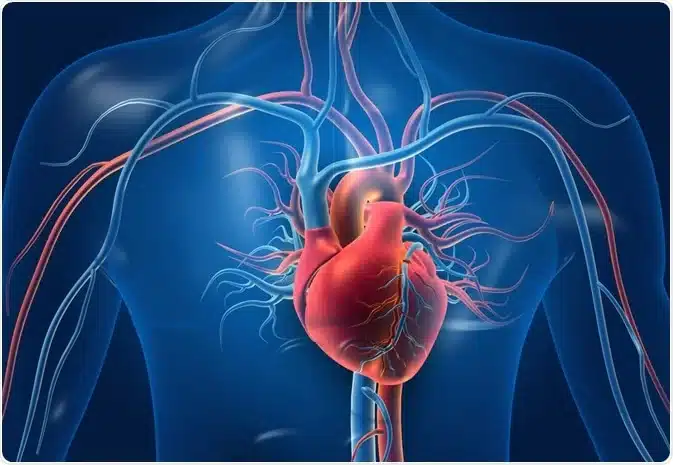
Over 75% of all aortic aneurysms are frequently caused by smoking in the past. In addition to the familial incidence, which ranges from 15% to 25%, risk factors include high blood pressure, high cholesterol, atherosclerosis, and coronary artery disease, according to Dr. Dhanesh Kamerkar, Head of Department, Vascular and Endovascular Surgery, Ruby Hall Clinic, Pune. But there is a difference between heart attack and aortic disease.
The body’s main artery, the aorta, which works tirelessly to transport oxygen-rich blood throughout the body, is prone to a number of diseases. According to Dr. Dhanesh Kamerkar, Head of Department, Vascular and Endovascular Surgery at Ruby Hall Clinic in Pune, one of the few in the nation to establish an advanced center specifically for aortic disease, aortic diseases are known as silent killers because patients frequently exhibit no symptoms.
Back and chest pain, together with trouble swallowing, are frequently thought to be signs of heart attack and stroke. However, a quick CT scan can determine if the issue is connected to aortic disease, in which case the expert emphasizes that prompt treatment is essential for successful clinical outcomes.
What is aortic disease and what signs does it present?
Aortic disorders (AD) in their many forms are responsible for millions of deaths worldwide each year, according to startling figures. For instance, one of the main causes of sudden mortality in males over 60 is an abdominal aortic aneurysm (AAA). Aneurysms, which inflate and weaken the artery wall, aortic dissections, aortic occlusions, and even aortoarteritis are all examples of aortic disorders (blood vessel inflammation more commonly seen in younger women).
Aortic disorders may be clinically silent in many instances, although a wide variety of symptoms signs, according to the Task Force for the Diagnosis and Treatment of Aortic Diseases of the European Society of Cardiology (ESC).
Acute deep, aching, or throbbing chest or abdominal pain is one of these. It is best described as having a “feeling of rupture” and can radiate to the back, buttocks, groyne, or legs. Thoracic Aortic Aneurysm symptoms include coughing, shortness of breath, and difficult or painful swallowing (TAAs).
According to Dr. Kamerkar, signs to look out for include persistent or sporadic abdominal pain or discomfort, a throbbing sensation in the abdomen, or feeling full after consuming little food.
Typically, aortic aneurysms develop in a vulnerable area of the aorta wall. Aortic aneurysms are thought to be the cause of 15,000–20,000 deaths each year in the US, ranking as the 13th most common cause of death.
What problems may arise if AAA is not treated?
The infrarenal and aortoiliac arteries are most frequently affected by AAA, which is a localized, enlarging, or abnormally enlarged abdominal aorta. Untreated AAA can eventually burst, causing excruciating pain, extensive internal bleeding, and death, according to Dr. Purvez Grant, Chief Cardiologist and Chairman of Cardiovascular Services at Ruby Hall Clinic.
What are the risk factors?

While the danger grows with age and typically affects those over 65, men are more likely than women to experience it. Dr. Kamerkar claims that males over 50 have a four to five times higher frequency than ladies their age. Over 75% of all aortic aneurysms are frequently caused by smoking in the past.
In addition to the familial incidence, which ranges from 15% to 25%, other risk factors include high blood pressure, high cholesterol, atherosclerosis, and coronary artery disease. According to Dr. Grant, early detection and treatment provide the best chance for living life to the fullest because a number of hereditary and lifestyle factors have been shown to raise the risk of aortic illness.
Why do we require specialty facilities?
Early identification and treatment are essential for vascular disease as a subtype in order to save lives. The easiest thing to do if someone is experiencing severe chest pain is to have an ECG. A diagnostic test must be performed to rule out aortic dissection if it is normal. With an aging population, these conditions are becoming more common.
Consider aortic dissections or an inner aortic wall tear as examples. This separation of one or more layers of the aorta’s wall is referred to as a dissection. This makes it possible for blood to move across the layers, further weakening the aorta’s walls.
An advanced center for aortic illnesses has been established with the newest vascular care technologies, including a hybrid cath lab where both catheterization and surgery may be done in one suite, in order to tackle this growing burden. said Dr. Kamerkar.
What else is being done to create awareness about aortic diseases?
With only 400 vascular surgeons, the Vascular Society of India, founded 20 years ago, is a relatively new organization. Training programs are being planned for doctors and other healthcare workers as a move to raise awareness.













